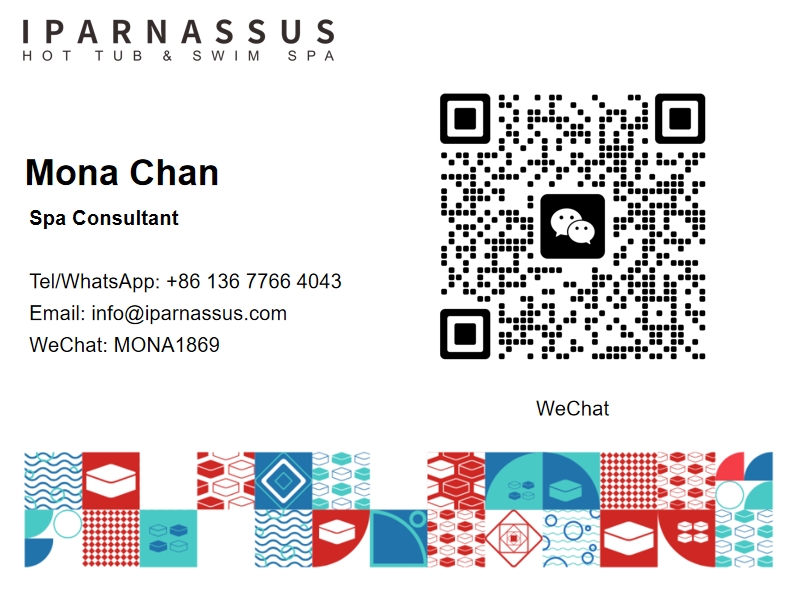Can I Go in a Hot Tub After Botox?
2024-11-16 15:53:09
If you've recently had Botox treatment and are wondering whether it's safe to enjoy a relaxing soak in a hot tub, you're not alone. Many people have questions about post-Botox activities, including the use of hot tubs. In this comprehensive guide, we'll explore the relationship between Botox and hot tub use, addressing common concerns and providing expert advice to help you make informed decisions about your post-treatment care.
How Long Should I Wait to Use a Hot Tub After Botox?
The timing of when you can safely use a hot tub after Botox is crucial for ensuring optimal results from your treatment. Generally, medical professionals recommend waiting at least 24 to 48 hours before exposing yourself to heat, including hot tubs, saunas, and steam rooms. This waiting period is essential because Botox needs time to settle into the targeted muscles and begin its effects.
During the first 24 to 48 hours post-treatment, the Botox is still in the process of binding to the nerve endings in the treated area. Exposing yourself to high temperatures during this critical period can potentially cause the Botox to spread to unintended areas, leading to unwanted effects or reduced efficacy in the targeted muscles.
Moreover, the heat from a hot tub can increase blood flow and circulation throughout your body. While this is generally beneficial for overall health, it can be counterproductive immediately after Botox injections. Increased blood flow may cause the Botox to metabolize more quickly or disperse from the intended treatment area, potentially diminishing its effectiveness.
It's important to note that individual factors such as the specific areas treated, the dosage used, and your body's unique response to Botox can influence the recommended waiting time. Some practitioners may advise waiting up to 72 hours or even a week before using a hot tub, especially if you've had extensive treatments or are new to Botox.
To ensure the best possible outcome from your Botox treatment, it's always best to consult with your healthcare provider or the practitioner who administered your injections. They can provide personalized advice based on your specific treatment plan and individual circumstances.
Does Heat Affect Botox Results?
Heat can indeed have an impact on Botox results, particularly in the days immediately following treatment. Understanding how heat interacts with Botox can help you make informed decisions about your post-treatment activities and maximize the effectiveness of your injections.
Botox, or botulinum toxin, works by blocking nerve signals to specific muscles, temporarily reducing their activity and smoothing out wrinkles. The process of Botox settling into the targeted muscles and taking effect typically occurs over a period of 3 to 7 days after injection. During this time, exposure to high temperatures can potentially alter the way Botox spreads and functions within the treated area.
When you expose your body to heat, such as in a hot tub, sauna, or even during intense exercise, your blood vessels dilate, and blood flow increases throughout your body. This increased circulation can potentially cause the Botox to spread beyond the intended treatment area or metabolize more quickly than desired. As a result, you might experience:
- Reduced effectiveness of the Botox treatment
- Uneven distribution of Botox, leading to asymmetrical results
- Shorter duration of the Botox effects
- In rare cases, unwanted effects in nearby muscles not intended for treatment
It's not just hot tubs that can affect Botox results. Other heat-related activities to be cautious about in the days following treatment include:
- Hot showers or baths
- Saunas and steam rooms
- Sunbathing or tanning beds
- Intense exercise that raises your body temperature significantly
- Applying heating pads or warm compresses to the treated area
While it's important to be cautious about heat exposure immediately after Botox, it's equally important to understand that these precautions are typically only necessary for a short period. Once the Botox has fully settled and taken effect (usually within a week), normal heat exposure is generally safe and won't significantly impact your results.
To ensure the best possible outcome from your Botox treatment, it's advisable to follow your practitioner's post-treatment instructions carefully. If you're unsure about specific activities or have concerns about heat exposure, don't hesitate to reach out to your healthcare provider for personalized advice.
What Should You Not Do After Botox?
After receiving Botox injections, there are several activities and practices that you should avoid to ensure the best possible results and minimize the risk of complications. While using a hot tub is one consideration, there are many other important dos and don'ts to keep in mind during the post-treatment period.
1. Avoid touching or massaging the treated area: For at least 24 hours after your Botox injections, it's crucial to resist the urge to touch, rub, or massage the treated areas. This can cause the Botox to spread to unintended muscles, potentially leading to unwanted effects or reduced efficacy in the targeted areas.
2. Don't lie down for several hours: Try to remain upright for at least 4 hours after your treatment. Lying down too soon can cause the Botox to shift, potentially affecting areas that weren't intended for treatment.
3. Skip intense physical activity: Avoid strenuous exercise for at least 24 hours after your Botox injections. Intense physical activity can increase blood flow and potentially cause the Botox to disperse from the treatment area.
4. Postpone facial treatments: It's best to wait at least 24 hours before getting any facial treatments, including facials, chemical peels, or microdermabrasion. These treatments can potentially interfere with the Botox settling into the targeted muscles.
5. Avoid alcohol consumption: Try to abstain from alcohol for at least 24 hours after your Botox treatment. Alcohol can thin your blood and increase the risk of bruising at the injection sites.
6. Don't use blood-thinning medications: If possible, avoid aspirin, ibuprofen, and other blood-thinning medications for a few days before and after your treatment, as these can increase the risk of bruising. Always consult with your healthcare provider before stopping any prescribed medications.
7. Refrain from applying makeup: It's best to keep your face clean and free from makeup for at least 24 hours after your Botox injections. This helps reduce the risk of infection and allows the injection sites to heal properly.
8. Avoid excessive sun exposure: Protect your skin from direct sunlight and tanning beds for at least 24-48 hours after treatment. UV rays can potentially interact with the Botox and increase the risk of side effects.
9. Don't consume certain supplements: Some supplements, such as fish oil, vitamin E, and ginseng, can increase the risk of bruising. It's best to avoid these for a few days before and after your Botox treatment.
10. Resist the urge to judge results immediately: Botox takes time to take effect, typically 3-7 days. Avoid making judgments about your results or scheduling touch-up appointments too soon after your initial treatment.
While these guidelines are generally applicable to most Botox treatments, it's important to remember that everyone's experience can be slightly different. Your healthcare provider or the practitioner who administered your Botox injections may have additional or more specific instructions based on your individual treatment plan and medical history.
By following these post-treatment guidelines, you can help ensure that your Botox treatment is as effective as possible and that you achieve the desired results. Remember, the key to successful Botox treatment lies not only in the injection itself but also in proper aftercare. If you have any concerns or questions about what you should or shouldn't do after your Botox treatment, don't hesitate to reach out to your healthcare provider for personalized advice.
For more information on hot tub installations and our products, please feel free to contact us at info@iparnassus.com.
References
- American Society of Plastic Surgeons. (2021). Botulinum Toxin.
- Mayo Clinic. (2021). Botox injections.
- U.S. Food and Drug Administration. (2021). FDA-Approved Drug Products: Botox.
- Journal of Clinical and Aesthetic Dermatology. (2019). Optimizing the Use of Botulinum Toxin for Facial Aesthetics.
- Plastic and Reconstructive Surgery. (2018). Evidence-Based Medicine: Botulinum Toxin.
- Dermatologic Surgery. (2020). Consensus Recommendations for the Use of Botulinum Toxin Type A in Facial Aesthetics.
- Clinical, Cosmetic and Investigational Dermatology. (2017). Patient satisfaction and efficacy of full-facial rejuvenation using a combination of botulinum toxin type A and hyaluronic acid filler.
- Aesthetic Surgery Journal. (2019). Complications of Botulinum Toxin A Use in Facial Rejuvenation.
- International Journal of Women's Dermatology. (2018). Botulinum toxin: A review of the mechanism of action and clinical applications in dermatology.
- Journal of Cutaneous and Aesthetic Surgery. (2016). Botulinum Toxin: The Midas Touch.
```
Send Inquiry
Related Industry Knowledge
- Are Hotel Hot Tubs Redefining Luxury in the Hospitality Industry?
- What Are the Dimensions of a Swim Spa?
- How to Build a Deck Around a Swim Spa?
- Is the Hot Tub Good for Sore Muscles?
- How Often Do You Drain a Hot Tub?
- What Can You Set a Hot Tub On?
- What Are the Benefits, Costs, and Best Exercises for a Backyard Swim Spa?
- What is a Swim Spa?
- How Often Should I Drain and Refill a 5 Person Hot Tub?
- Can a Woman Get a Uti From a Hot Tub



